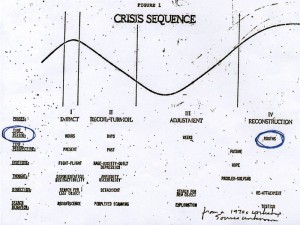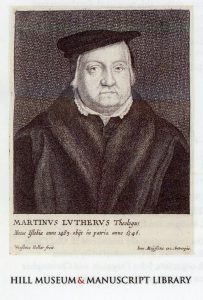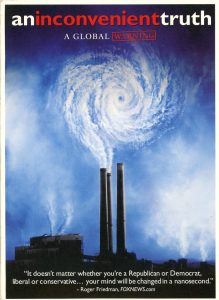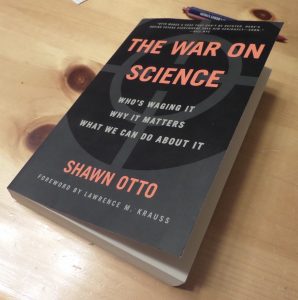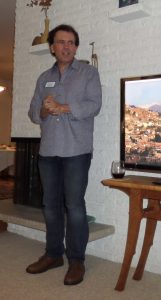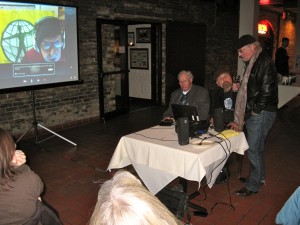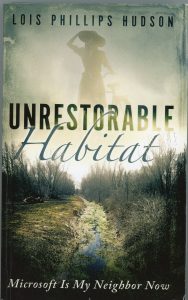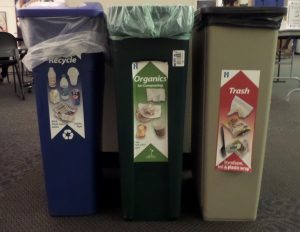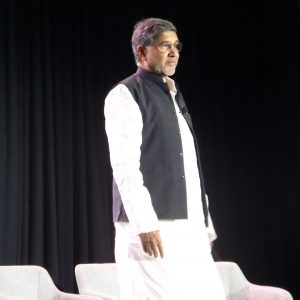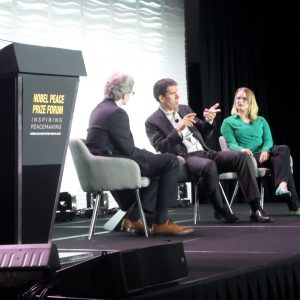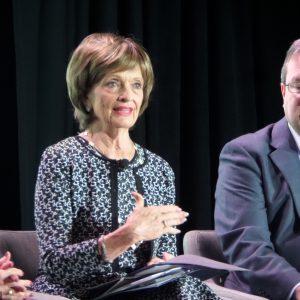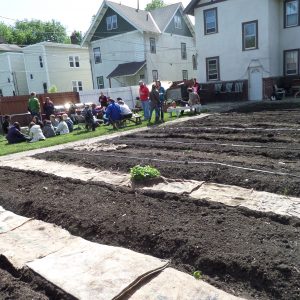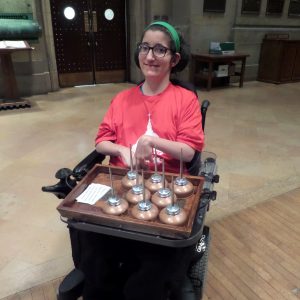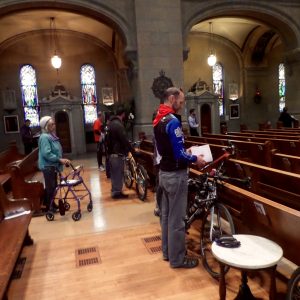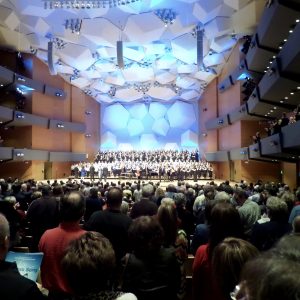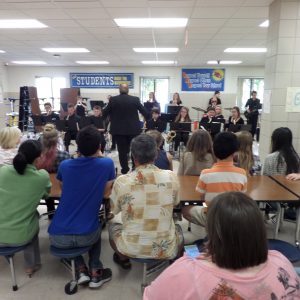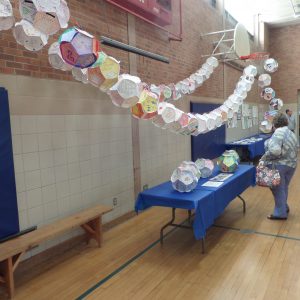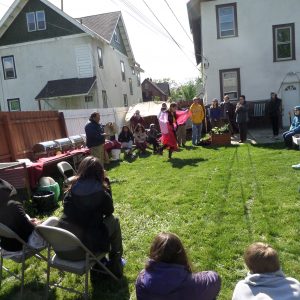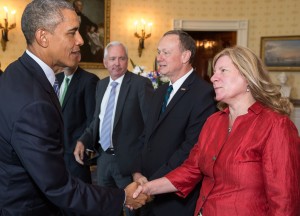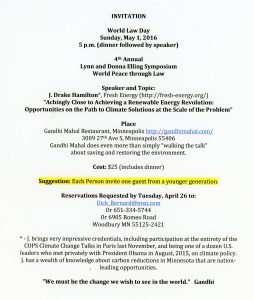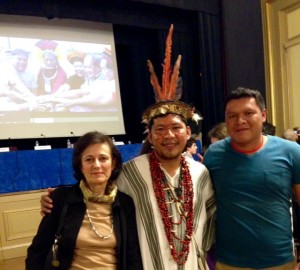UPDATE May 1, 2016: The official Lois Phillips Hudson website is here.
UPDATE Feb. 27, 2016: Six pages from North Dakota State University (Fargo) Archives, Feb. 23, 2016. Hudson NDSU Arch001Mrs. Hudson taught at NDSU 1967-69.
*
In 1962, Lois Phillips Hudson published “The Bones of Plenty”.
A New York Times Book Review commentary said this about the book: “It is possible…that literary historians of the future will decide that The Bones of Plenty was the farm novel of the Great Drought of the 1920s and 1930s and the Great Depression. Better than any other novel of the period with which I am familiar, Lois Phillips Hudson’s story presents, with intelligence and rare understanding, the frightful disaster that closed thousands of rural banks and drove farmers off their farms, the hopes and savings of a lifetime in ruins about them.”
While I grew up a North Dakotan, I missed the book at the time of publication.
In early Jan. 1962, freshly graduated from college (Valley City (ND) State Teachers College), I entered the United States Army, spending two years playing war in the rattle-snake infested foothills of the Rocky Mountains at Ft. Carson, Colorado and other places, like Hanford Firing Range, Washington.
After the Army, life interfered with things like recreational reading; I don’t recall ever hearing about “The Bones of Plenty”.
In fact, it wasn’t until my friend, Nancy Erickson, told me about the The Bones of Plenty a few years ago, that I took the time to read it, and it spoke to me, very personally. It was my people she was talking about: rural North Dakotans who had lived through and survived the awful years of the 1930s, “The Great Depression”.
The “Bones of Plenty” is set in rural Stutsman County North Dakota in 1934, set primarily in Jamestown and rural Cleveland ND (photos which follow are of Cleveland ND* taken January 27, 2016).
(click to enlarge)
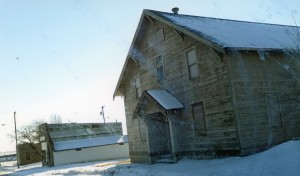
Jan. 27, 2016, Cleveland ND, west side of the main street.
At the time I was introduced to “The Bones of Plenty” by Nancy, I was spending more and more time with my Uncle Vincent and Aunt Edithe in LaMoure, a town little more than an hours drive from Cleveland.
When I’d ask Vincent, a lifelong rural Berlin ND farmer, about the Depression, he would always reply that 1934, the year he was nine, was the worst. (He was 2 1/2 years older than Lois Phillips, then living on the rural Cleveland ND tenant farm, not far away).
I can attest, having shouldered the task of closing down the 110 year old farm, that the family never recovered from the trauma of the 30s.
And they weren’t unusual: being trapped in years of uncertainty has its impact. “The folks”, their siblings and many others lived in the shadow of the 30s their whole lives. “The Bones of Plenty” put “meat” on those bones for me. It helped me understand why they lived as carefully as they did.
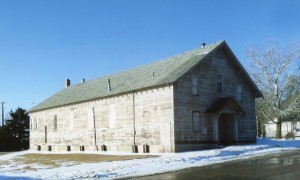
Jan. 27, 2016. Likely the Town Hall, probable scene of meetings in The Bones of Plenty.
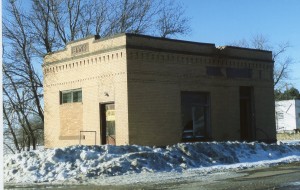
Jan. 27, 2016. Most likely the Bank in Cleveland which failed in the 1930s.
*
Fast forward.
January 6, 2016, one of those occasional unusual e-mails came to my e-screen.
A person named Cynthia Anthony introduced herself: “I’m seeking permission to post links to your posts, numbers 490**, 499**, and 565**, which reference Lois Phillips Hudson. I am the director of the Lois Phillips Hudson Project, and run a website dedicated to preserving her legacy – you can view [the site]
here.”
As we began our chat, I found that Cynthia lives in western New York state, I am in Minnesota (but North Dakotan to the core). She had come to be custodian of Ms Hudson’s boxes of archival material after Ms Hudson’s death in 2010, in part, I gathered, because of her involvement in something called the Rural Lit Rally. She said the boxes had yielded little about Lois’ 8 years in ND, nor about her parents and their kin. She knew a lot about most of the rest of Lois’ life, beginning about 1937, mostly in Washington State, most around Redmond.
Redmond, among other things, is the headquarters of Microsoft.
I agreed to help Cynthia sort out the North Dakota connection of Ms Phillips Hudson (and invite the reader of this blog to do the same. Here is the portal for submitting comments, etc., to her.)
Included in the many boxes was a manuscript of a nearly completed book,
Unrestorable Habitat: Microsoft Is My Neighbor Now (click on the title for ordering information). Ms Hudson had apparently been working on the book from about 2000 till near her death; roughly the decade of her 70s.
On careful review, a decision was finally made to publish the 390 page book as it had been left by Ms Hudson, including occasional typos and notations about incomplete verification of sources.
*
I have read Unrestorable Habitat, and I recommend it without any qualification whatsoever. It is powerful, and it is uncomfortable.
In many ways “Unrestorable Habitat…” is autobiographical and about the world of Lois Phillips Hudson, from youth forward. It weaves personal recollections and direct observations of contemporary life, as seen by a young girl, then by a woman who ultimately retired as a college professor in 1992, about the desperately poor rural North Dakota of the 1930s, and country village, thence city of Redmond, Washington, from the 1930s to the end of her life.
The book offers the reader a great deal of food for thought about our present technological age.
No reader who cares about the future of our planet will be comfortable reading Ms Hudsons observations. We are all complicit in the deteriorating state of our planet. Start with myself, writing this post on a computer in a comfortable room, soon to be transmitted to who-knows-where by internet….
As I read Unrestorable Habitat, I have to ask myself, how do I fit into this narrative of squandering our future for the comfort of today? What can I, as an individual, do to make the future hospitable or at least survivable for the generations which follow, as well as for other living species?
The problem to solve is not someone elses: it is mine, and all of ours.
This book would be a great one for book clubs. I recommend it highly.
* – In 1920, the first census of Cleveland showed a population of 341; in 1930, 273; 1940, 246; 1950, 181…the current population is estimated as 82.
** – The references to The Bones of Plenty in previous blogs are found in
#490;
499 and
#565
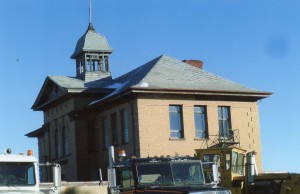
Jan. 27, 2016. The two story public school in Cleveland, now closed, and apparent storage yard for heavy equipment. Ms Phillips Hudson went to her first school years here, and her mother graduated from this high school.
Thanks for sharing information on Lois Phillips Hudson book “The Bones of Plenty”. There are two books about the dust storms of the Great Plains and depression of the late twenties and early 1930 that I really like. They are The Worst Hard Time, by Timothy Egan, The Great Plains by Ian Frazier and Pioneer Woman of the West, by Susan Armitage and Elizabeth Jameson. I just finished my book “Memories of a Grateful Past” Stories of Family and Friends from the Heart 1830-1985. The book has 470 pages of stories about family, friends, and my work as a teacher and eighteen years of working with the Wisconsin Education Association (1968-1985). The book also includes family stories from South Dakota during the depression and drought. It has gotten wonderful reviews, so I’m pretty excited about it. The books will be printed and sent to me by April 1.
from Curtis: As a history guy is it just on ND? Just finished Eva’s Story by Eva Schloss. Story of a survivor of the death camps of WWII. After the war her mother married Otto Frank. Tough read about what humans did to other humans.
Response to Curtis: Bones of Plenty is 100% about Stutsman County ND, basically rural Cleveland and Jamestown in 1934. Unrestorable Habitat is mostly about Redmond (suburban Seattle) in the 2000s, but includes lots of autobiographical flashbacks to Hudson’s growing up on the ND farm.
from Lynn: Thanks Dick, This reminds me that when I worked for the North Dakota Farmers Union we were privileged to have Lois speak to a youth group, I think in 1968. Very memorable experience!
from JoAnn: Thanks for all your interesting discussions. I can remember receiving a copy of “Bones of Plenty”, I believe from my mother. My brother and I enjoyed the incongruity of the lovely title. I totally enjoyed the book. I was not old enough to participate in the actual worst periods of those times, but i certainly lived through the after effects of those years. My grand father lost his bank in Wheatland in spite of my mother donating her $5000 inheritance from an uncle in the vain attempt at saving the bank. (Quite a chunk in those days.) I can remember many conversations (this would have to be early 40s as I was born in late 39) in which my father would end with the phrase, “Well, we can always move to the Ozarks.” I guess that was his escape plan if we couldn’t stick. My husband and I have recently moved and while unloading and sorting and selecting books to keep, I actually handled BONES OF PLENTY today. I acquired along the way somewhere, a book entitled, REAPERS OF THE DUST, a prairie chronicle also by Hudson. More recently I found THE WORST HARD TIME by Timothy Egan, which, as my brother would say,”Another miserable book”. This I took to mean another book about a miserable time. Egan’s book is not about our local area but covers the horror of the dust that covered the earth of the high plains during those “dirty thirties.” The descriptions were unbelievable. Perhaps you’ve read this book already. Anyway, thanks for directing my thoughts back to those memories. You do great work with your blog. Cheers!
from Emily: Great article! Thank you for sharing! I hope you are well.
from Debbie: Thanks for this info, Dick. I love reading books about Dakota. I do believe I read Bone of Plenty way back when. Will look for the other.
from Christina: I googled for some information on those two books. I think they both might be very interesting especially “Unrestorable Habitat.” I like John Grisham’s books. I am now reading Gray Mountain. I know it’s fiction but based on true situations. This one is about the coal companies strip mining the mountains, miners with black lung diseases,the water being polluted from the coal slush & waste being dumped into the valleys etc. The coal companies have the lawyers pretty well sewed up . I am thankful how Gov. Link got that reclamation project passed. Many object to the EPA but thankfully some one is watching out for our environment. Thanks for the book recommendations.
from Kathleen: Thanks very much. Our library system has it. I look forward to reading it when I return from CA.

